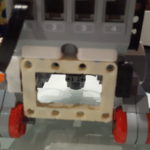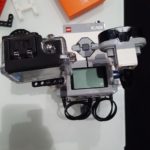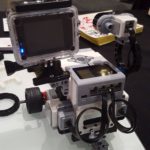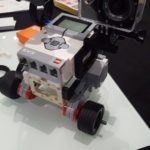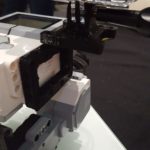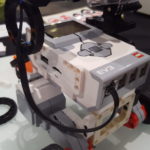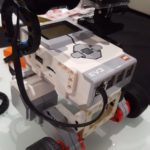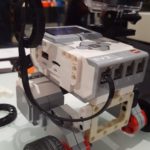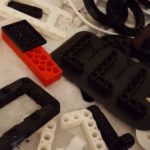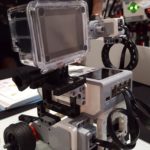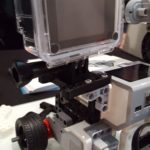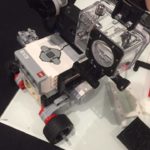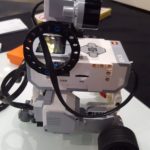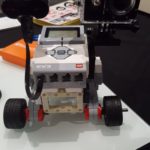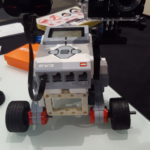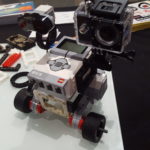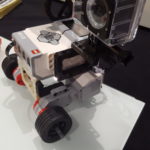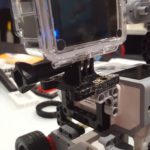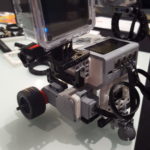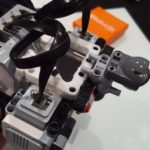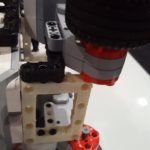| Name |
MeccanoidG15 |
MeccanoidG15KS |
Meccanoid2.0 |
MeccanoidXL 2.0 |
| Robot height | About 2 feet (61 cm) | Almost 4 feet (122 cm) | About 2 feet (61 cm) | Almost 4 feet (122 cm) |
| Robot Material | High-impact Polycarbonate | High-impact Polycarbonate | Durable ABS and high-impact polycarbonate | Durable ABS and high-impact polycarbonate |
| Number of Parts | 621 | 1223 | 497 | 1014 |
| Number of Smart Motors | 4 | 8 | 4 | 8 |
| Number of Motors | 2 | 2 | 2 | 2 |
| Articulation | Basic | Advanced | Basic | Advanced |
| Power Supply | 4x C-cell alkaline batteries | Rechargeable Ni-MH battery pack | 4x D-Cell alkaline batteries | Rechargeable Ni-MH battery pack |
| Smart Device Communication (iOS and Android) | Yes | |||
| Voice Recoginition | Yes | |||
| Pre-programmed phrases | 1000+ | 4000+ | ||
| L-I-M programming | Yes | |||
| Ragdoll Programming | Yes | |||
| Open source programming | Yes | |||
| Drag and drop programming | No | Yes | ||
| Micro Controller | Meccabrain | |||
| Flash Memory | 64Mb | 128Mb | ||
| Programmable LED Eyes (500+ colors) | Yes | |||
Archiv der Kategorie: Hardware
Vergleich Meccanoid G15, G15KS, 2.0 und XL 2.0
| Name |
MeccanoidG15 |
MeccanoidG15KS |
Meccanoid2.0 |
MeccanoidXL 2.0 |
| Robotergröße | ca. 61 cm | ca. 122 cm | ca. 61 cm | ca. 122 cm |
| Robotermaterial | robustes Polykarbonat | robustes Polykarbonat | Hochwertige, belastbare Kunststoff- und Polykarbonatteile | Hochwertige, belastbare Kunststoff- und Polykarbonatteile |
| Anzahl der Teile | 621 | 1223 | 497 | 1014 |
| Anzahl der Servomotoren | 4 | 8 | 4 | 8 |
| Anzahl der Antriebsmotoren | 2 | 2 | 2 | 2 |
| Beweglichkeit | Elementar | Fortgeschritten | Grundlegend | Fortgeschritten |
| Stromversorgung | 4 Alkali-Babyzellen C | wiederaufladbarer Ni-MH-Akku | 4 x D (LR61) | wiederaufladbarer Ni-MH-Akku |
| Smartphone-Kommunikation (iOS und Android) | Ja | Ja | Ja | Ja |
| Stimmerkennung | Ja | Ja | Ja | Ja |
| Vorprogrammierte Fragen und Antworten | 1000+ | 1000+ | 3000+ | 3000+ |
| L-I-M-Programmierung | Ja | Ja | Ja | Ja |
| „Ragdoll“-Fernsteuerungsfunktion | Ja | Ja | Ja | Ja |
| Quelltextoffene Programmierung (Open Source) | Ja | Ja | Ja | Ja |
| Mikrocontroller | Meccabrain | Meccabrain | Meccabrain | Meccabrain |
| Flash-Speicher | 64Mb | 64Mb | 128Mb | 128Mb |
| Programmierbare LED-Augen (500+ Farben) | Ja | Ja | Ja | Ja |
uArm Swift: Multi-use Desktop Robotic Arm for Everyone
In 2014 UFACTORY built the first open source desktop robotic arm, ushering in a new era of affordable desktop robotic arms for consumers. uArm is an Arduino-powered desktop 4-axis parallel-mechanism robot, easy to use, has multiple accessories and open sourced. In Jan 2014, uArm went on Kickstarter and became famous overnight, leading to an exclusive interview with WIRED. A standout quote from the piece: “Thirty years ago Bill Gates promised to put a computer on every desk in America, an ambitious sentiment echoed by Wang and company … The most innovative aspect of the entire project is probably the concept of putting a robot arm on your desk”.
As the robot arm is moving to various industries, its users have expanded from relatively minority geeks to robot lovers. The demand for better and easier user experience is increasing.
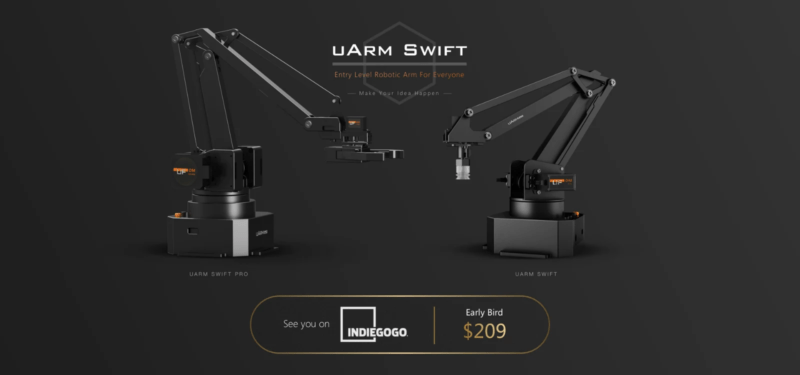
January 23, 2017, UFACTORY returns again, announcing two robotic arms in uArm Swift Series. Swift is intended to highlight the elegant texture of the fuselage, lightweight and portable form and flexible movement, just like a swift. This series has uArm Swift and uArm Swift Pro.
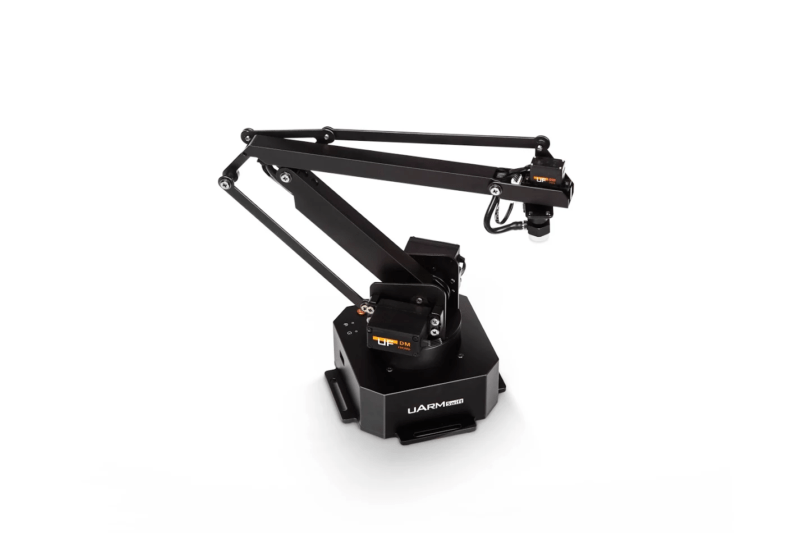
- Hardware Upgrades
Performance improvements
1.Precision improvement
uArm Swift enhanced the control algorithm and increased the accuracy by 50%, from 1cm to 5mm.
uArm Swift Pro adapted self-designed reducer. Working with a high-precision stepping motor, uArm Swift Pro minimizes gear gap, improves joint accuracy, and is more compact. The built-in 12-bit magnetic encoder and motor forms instant position feedback, achieving closed-loop control, and improves the accuracy to unprecedented 0.2mm, perfectly performs 3D printing and laser engraving.
- Working scope improvement:
uArm Swift Series improves mechanical arm structure and increases working range by 20%, covering the working area of an entire A4 paper.
- CPU upgrade
uArm Swift Series upgrades the main board. We choose Arduino MEGA 2560, which is nearly 10 times larger in the storage space compared to the previous UNO edition.
- Accessories enhancements
uArm Swift Series has 4-axis, whether equipped with fixtures or suction head, the end of uArm can freely steer, and the replacement of accessories requires less than 30 seconds.
uArm Swift/uArm Swift Pro have a built-in socket for selected Seeed Grove modules.
uArm Swift Series can be equipped with a smart car, the uCar. uCar is a mobile open-source car, with infrared avoidance, trajectory planning functions.
uArm Swift Series adapts CNC integral forming process, and the whole body is matte black. uArm Swift looks has a more minimalistic design. The aluminum body is light and stable, enhancing the overall rigidity.
Compared with the previous version, uArm Swift series redesigned the base, inserted the mainboard and added power button, function switching button, play button and menu button. The new indicator light shows the current operation mode and status of uArm Swift.
- Software upgrade
uArm Swift Series support PC + mobile control.
Software upgrade -uArm Studio
uArm Studio is a brand new cross-platform robotic arm control software. It has integrated offline learning, graphical programming and instant control functions, manipulate the robotic arm to finish complex tasks.
- Teach & Play Offline Learning Mode
Teach uArm Swift by your own hand to learn move, gripping, dropping, and save them with just a click to replay on Blockly mode. uArm Swift can also sync offline learning data once connected.
- Blockly-based graphical programming
Blockly is a web-based visual programming tool, allowing users to program without needing to code The software is designed to be so simple that even even preschool children could create a program easily. Detailed tutorial will be provided for your quick guide and interesting secondary development.
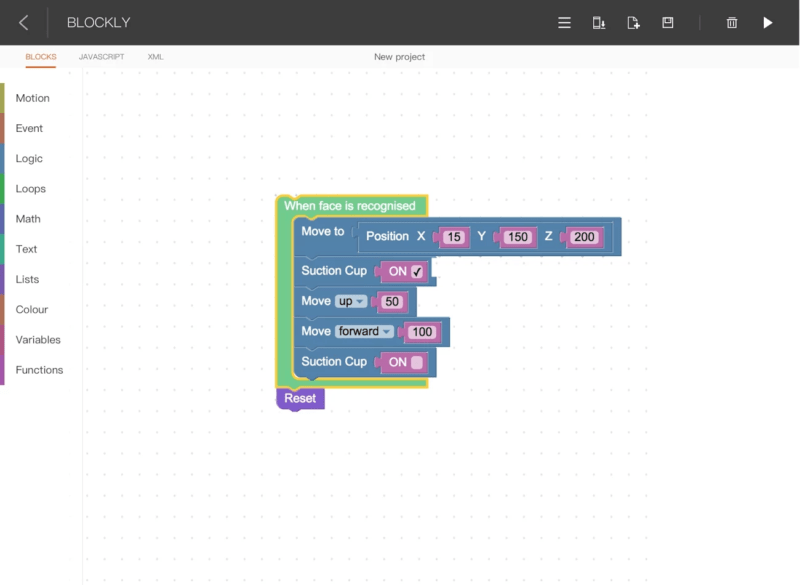
- Instant Control
uArm Studio has combined control of keyboard and mouse. Developers may use keyboard hotkeys and mouse simultaneously to control move, gripping, and dropping of the robotic arm, and it supports customize hot keys.
After connect with LeapMotion, users of uArm Swift may use their own hand to control gesture such as move, gripping and dropping etc.
Software upgrade –
APP-uArm Play
Robotic Arm has built-in Bluetooth module, simply connect your smartphone with uArm Play to remote control your uArm Swift or uArm Swift Pro.
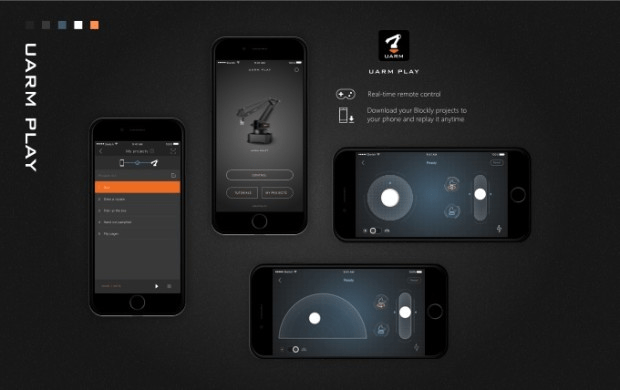
Your smartphone can also work as an external actuator, download and run a program from Blockly.
UCS
UCS, also known as uArm Creator Studio, which is a open sourced developer tool developed by UFACTORY. UCS has integrated graphical programming and coding, to achieve features such as rapid development, visualize and easy sharing.
- Rapid Development
With numerous commands of UCS, developers don’t need to construct programming environment.
For programming developers, UCS is a rapid development tool, developers doesn’t need to construct programming environment, any interface of the whole system supports Python script, all variables can be sharing between visual programming and coding which means you don’t need to copy setting each time.
- Built-in Robotic Vision
UCS has integrated complex robotic vision function, just need to connect with the camera, so the uArm can “see” and adapt to different environment.
The camera can instantly locate, memorize, recognize and track 3D space position of objects.
3.Easy Sharing
Every creator will be able to save their own work as .task file format through the UCS programming, and it supports one click sharing to the official website of UFACTORY or Reddit Community, copying scenario in just one click on other robotic arms.
The uArm Swift Pro is a “Open Sourced” design concept with more freedom, simplicity, and functions. This is a whole new open platform came from developers, back to developers, and still that Open Source Robotic Arm. We just can’t wait to become your comprehensive desktop assistant!
Alexabot: Amazon Alexa Controlled Robot With the Raspberry Pi
A Robot Arm for the Rest of Us
Slant Concepts is creating a robot arm that anyone can use.
Robot arms have been doing redundant tasks in manufacturing for nearly 70 years. These hundred thousand dollar behemoths manage assembly lines and pack boxes. But they only exist on the assembly-line. Why aren’t they in the home cleaning counters, feeding the pet, and prepping breakfast.
The main reason for this situation is that they are difficult to use. Th industrial arms in factories require skilled engineers or tradesmen to get working. They are also incredibly expensive. But a company named, Slant Concepts, is changing that with the ShopArm.
The ShopArm is a 3D printed robot arm that makers can build and the rest of us can just use. The ShopArm is meant to be used to perform some of the repetitive tasks in our lives.
The ShopArm currently can be trained to do anything it is physically capable of, by using a common PC. The ShopArm software lets the user select waypoints for the arm to move to. Just click on a place on the virtual workspace where you want the arm to go and it will move there. Then you can record a series of these to have the arm put bread in a toaster and start it.
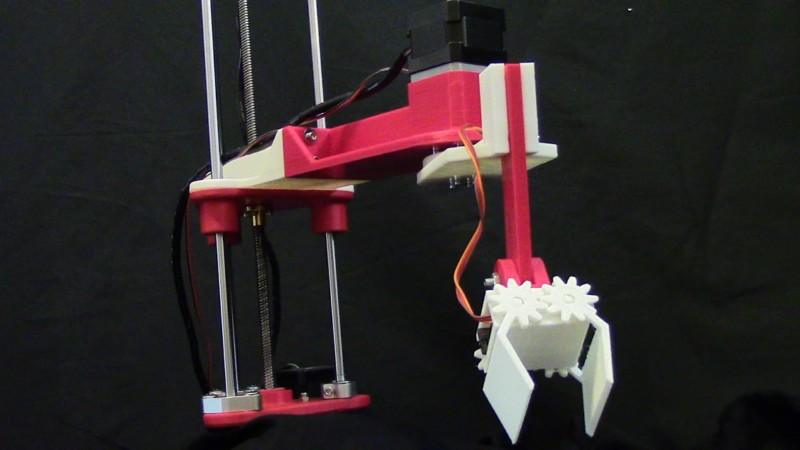
Another way that Slant has created to train the ShopArm is with a camera. All anyone has to do is hold a green colored tracking marker over a camera on the end of the arm. Then arm will then follow the marker around and record the movements
Eventually, users of the arm will be able to bring it into their home, show it what they want done and then just leave it. They might train it to start the toast every morning at 7:00 AM or feed the pet on a regular basis. But the real value of the arm is in performing one-off repetitive tasks. Train it to decorate a Christmas cookie then have it do that 100 more times.
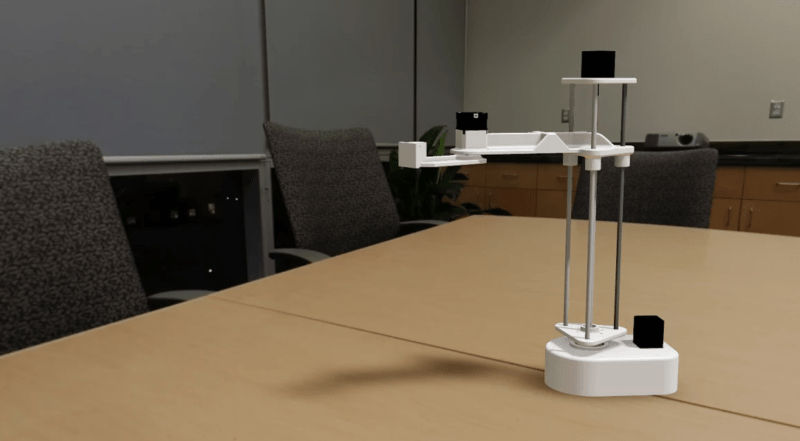
Slant is running the Kickstarter in order to continue developing the project to full implementation by normal consumers.
About Slant Concepts: Slant Concepts is a product design company based in Boise, ID. Slant was founded in 2014 as a product consultancy and micro-manufacturer. After completing numerous projects for client over its first two years, in 2016 Slant focused entirely on robotics and dedicated itself to producing internally developed products for the home, school and business.
Revolutionizing Consumer Technology: a Robot that Doubles as a Self Moving Suitcase
Technology is rapidly evolving and changing the way that we go about living our daily lives. We’re living in an era were phones are able to do thousands of different things and cars can drive by themselves. Yet for all of this innovation, traveling and carrying things with you has remained relatively the same over the last couple of decades. Luggage hasn’t benefited from the rapid technological advances of the 21st century.
That is until now. Travelmate is a new type of robot that doubles as an affordable self moving suitcase. It moves by itself and thinks for itself thanks to a variety of sensors and integrated artificial intelligence. It’s fully autonomous, meaning that it moves on its own through all types of terrain. Travelmate easily navigates through crowds, uneven environments and other obstacles.
This robot doesn’t need any extra accessories and uses your smartphone’s location to follow you around. It adjusts to your speed and can go up to 6.75 mph, so it’ll never be far behind. It also has LED indicators which will show you where it’s planning to go.
David Near, Travelmate’s CEO, says that, “one of our top priorities is to make sure that Travelmate is as secure as possible”. That’s why you can see exactly where it is at all times through the Travelmate app on your smartphone. If someone else wants to take your Travelmate, it will sense that it isn’t following you anymore and will lock its wheels, which will prevent it from being moved. You can also activate audible alarms through the Travelmate app. These security features mean that it’s virtually impossible to lose it.
Travelmate has plenty of features. It has managed to re-invent the wheel – literally. Travelmate uses unique omni wheels that allow for precise adjustments in movement. It has such an incredible range of movement that it can turn 360 degrees without moving from its place.
You can tell your Travelmate to follow you from the side, from the front or from the back through the Travelmate application.
Travelmate is an autonomous suitcase, but it’s also the first affordable all purpose robot. It has the potential for hundreds of features and real world applications. It can be a camera operator, security robot, or a robot companion. There’s no limit to the potential that Travelmate has.
That’s in large part due to the team behind this one of a kind suitcase. Travelmate Robotics was formed as a separate company to launch consumer robots at an affordable price point. They’ve been developing Travelmate for over a year before officially announcing it. Their team consists of developers who have been manufacturing autonomous commercial robots for 8 years. They include robotics specialists, designers and even people who’ve worked on prototypes for space exploration rovers.
So it’s no wonder why Travelmate is so innovative and unique. You can pre-order a Travelmate right now through indiegogo at a starting price point of 399$. However, this price might not last long, because distributors are already in contact with Travelmate Robotics.
Distributors in more than 30 countries are already in negotiations to carry their suitcase in their stores. What that means is that pre ordering now may be your only chance to get one at such a low price. David Near says that, “we’re very happy that investors and distributors have expressed interest in our company. We are always open towards new partnerships and proposals”.
In any case, traveling is about to get a whole lot easier. Technology is constantly moving us forward and Travelmate is at the forefront of that.
LEGO MINDSTORMS EV3 – Project „Mak3rBot“
The Mak3rBot is a LEGO MINDSTORMS Robot that consists of 3D printed Parts. The design is based on Damien Kees RileyRover / Joe Menos Retailrover as this design only needs a few parts. All parts were printed on a Vellemann k8200 3D printer. Most of the parts could be found on Thingiverse, some needed to be exported from Ldraw/LeoCAD. The LEGO ActionCam Camera mount has been designed by Andy Milluzzi. The mission of this robot is to travel to Maker Faires and share the #MINDSTORMSMAGIC with the makers around the world and show them that it is possible to combine LEGO with your maker hobby and create your own parts and robots.
The pictures were taken at Legoworld Utrecht 2016. The Mak3rbot robot and pictures were made by me, Sebastian Trella. Feel free to share pictures or contact me if you need more information or help with creating your own robot.
MODI, Smart IoT/Robotic Modules, Kickstarted
“JUST CONNECT.” LUXROBO wants you to simply connect its MODI modules to create an IoT or robotic device in seconds. MODI is a set of cube-shaped modules that LUXROBO launched on Kickstarter.com on October 14th. It has already reached its funding goal of $30,000 in less than three days. With MODI, you can quickly and easily create devices like a theft detector, an RC car, a mini Segway and much more.
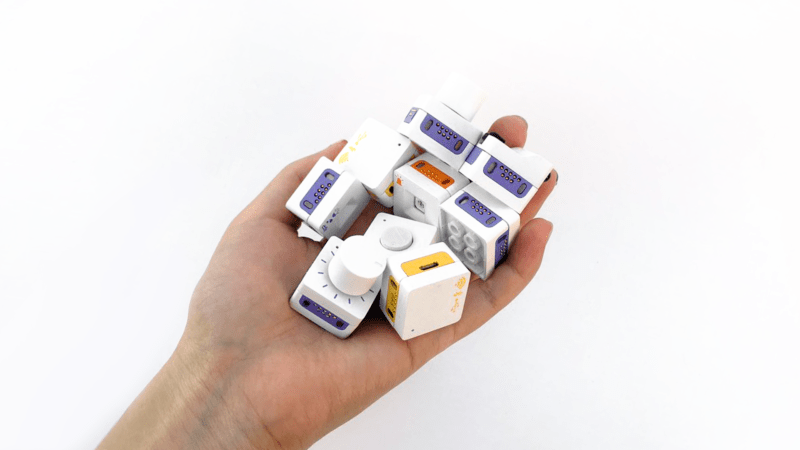
MODI comes with 13 different modules. They are color-coded into three different types: Input, Output and Setup. LUXROBO plans to add numerous other modules to its line-up soon. To take a full advantage of your MODI modules, you would customize the interactions among the modules through MODI Studio, LUXROBO’s simple graphic coding tool. You just need to drag and drop the commands. You can also convert the graphic coding into C Language (with other languages to be added) instantly.
The first thing you notice about MODI is its simple, elegant, minimalist design. You may also be surprised to see how small the modules are, only about 2.5 cm wide and long, and 1.5 cm tall. In such a compact dimension, LUXROBO has packed in PCB, MCU and its unique magnetic connection mechanism, in addition to the apparatus that supports each module’s unique function. Taking advantage of each module’s MCU, each MODI comes with MODI OS embedded. This feature enables each module to do its own processing and store memory. Each MODI is a smart module. One of the many benefits is MODI modules do not need to be connected to a PC or some other form of a master system to function on their own.
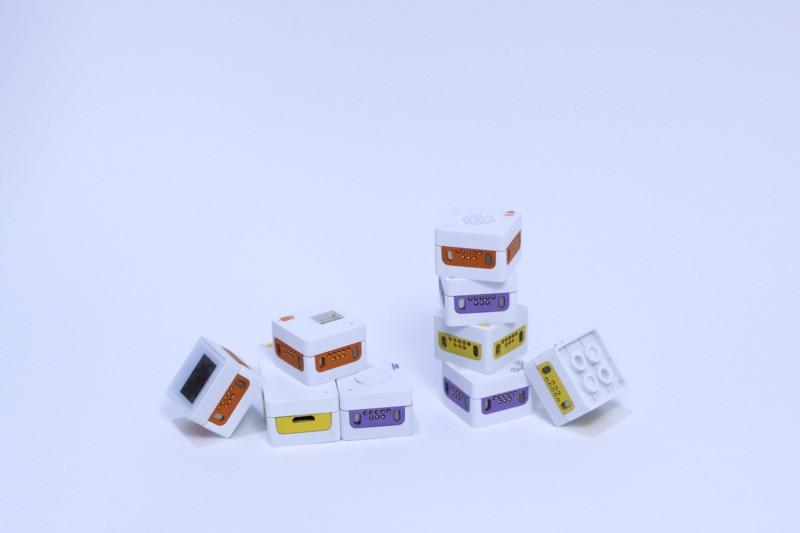
Putting MODI modules together is a pure joy. Each module’s four sides are all equipped for MODI’s unique magnetic connection. When placed close to another module, a pair of magnetic prongs come out slightly to form a tight and secure magnetic connection with the other. It is a lot of fun to try the automatic magnet connection over and over. Another advantage of MODI is its compatibility with Lego blocks. You can easily recycle the Legos or Lego-compatible blocks that you may have stored away to build a nice housing to your MODI devices.
LUXROBO aims to make IoT and robotic technologies more accessible for everyone, and that goal is captured in their vision of “Robotics of Things.” With its Kickstarter campaign, LUXROBO has taken a big step towards its vision of Robotics of Things. Until November 22nd, you can back LUXROBO and get MODI modules at approximately 40% off the estimated prices.
About LUXROBO:
LUXROBO’s roots are in robots. The founding team and core R&D members studied robotics together in college and have entered and won numerous international robot competitions together. LUXROBO was founded with the vision “Robotics of Things,” making robotic and IoT devices readily accessible for everyone.
LUXROBO is young and fearless. It was founded while its core members were still in college. It had no fear in developing its own OS for MODI and its own SW coding tool in MODI Studio. Even with MODI still in development and with no revenue stream to show, LUXROBO has been honored and recognized as one of Korea’s top technology-based startups, including being awarded Top11 at this year’s Echelon Asia Summit.
LUXROBO is ready for next big steps and challenges. LUXROBO has supplemented its young talents with experienced engineers and marketers from Samsung Electronics. With the Kickstarter campaign under way and supply of MODI modules to the UK soon to follow, LUXROBO is ready for a take-off.
Kickstarter Campaign:
https://www.kickstarter.com/projects/luxrobo/modi-create-anything-you-want-with-robotics-of-thi
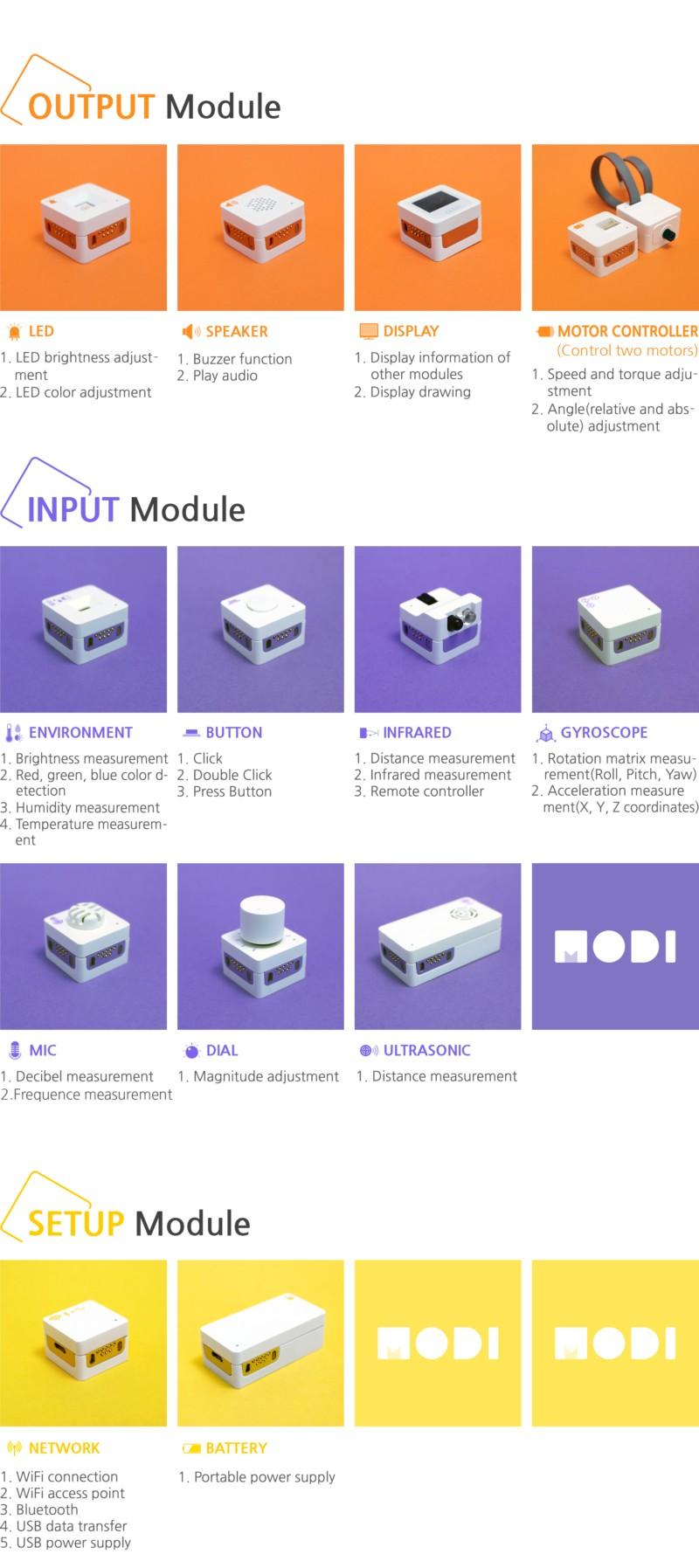
Plobot is a colorful coding companion that takes programming beyond the computer screen
A revolutionary robot toy helps your kids learn computational thinking through physical play
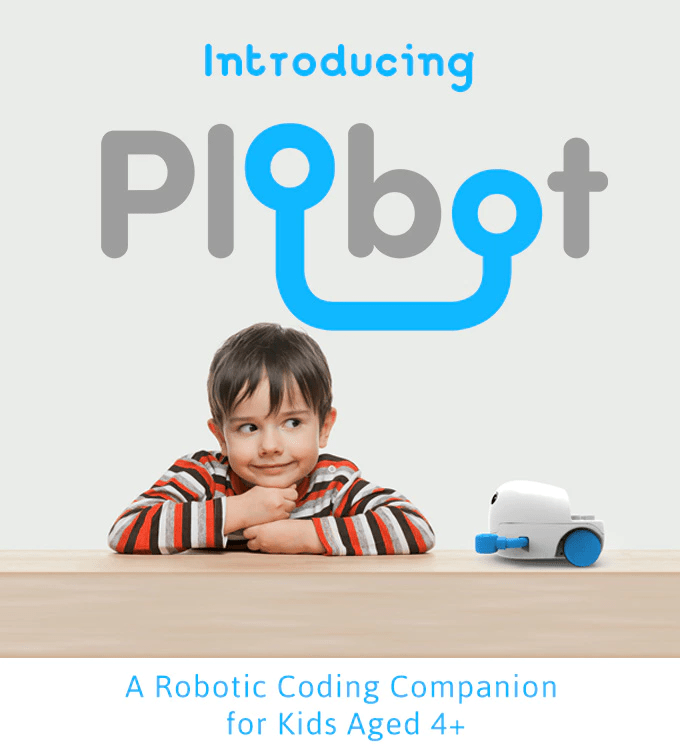
An educational robotics startup is pioneering a new way of teaching computational thinking and programming through physical interactions with command cards.
How the Plobot platform works
Plobot is an Arduino-based robot learning companion designed for four to eight year-olds. It’s designed to be a child’s first encounter with coding concepts – using cards and storytelling versus syntax and computer screens.
https://www.kickstarter.com/projects/1365116576/plobot-a-robot-coding-companion
Each command card represents a block of code, directly triggering actions for the robot through its built-in RFID scanner. Kids can make Plobot navigate a maze of obstacles, play music, light up with different colors, sense nearby objects, and much more.
Swiping the cards in sequence strings together a ‘program’ the robot follows, with the „Play“ card working as an execute function. Amplifier cards mimic loops and conditionals, changing the effects of the other cards.
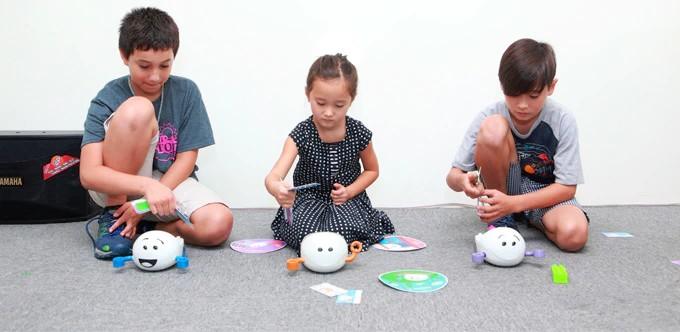
A headstart in computational thinking
By breaking down each task into a sequence of steps, kids exercise problem solving and creative thinking abilities, while picking up core coding concepts such as variables, conditionals, and loops. This helps pave the way for a foundation in computational thinking, and sparks an early interest in computer science.
Plobot can take up to 50 instructions in one sequence. With card expansion packs, Plobot provides countless possible combinations that make it one of the most versatile screen-free coding platforms in the market.
In addition to command cards, Plobot works with ‘stations’, circular pads with labels like ‘school’, ‘ice cream shop, or ‘home’ which serve as goal posts during programming activities and adds a storytelling element to the lessons.
Plobot’s exterior is made of easy to clean plastic, and kids can customize Plobot using stickers, clay, and or attaching Duplo blocks on its back.
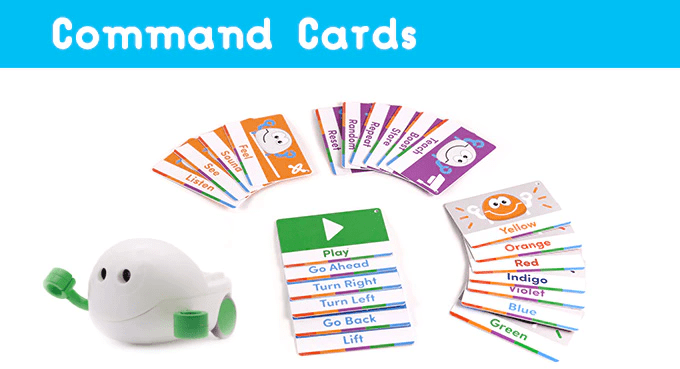
A Maker’s Journey
Plobot began in 2013 as Rodolfo Cossovich’s side project. Rodolfo is an Argentinian robotics engineer and inventor who teaches robotics at New York University.
“We started with the idea that children learn best through physical play,” Cossovich shares, “The challenge was fundamentally how to make the code-learning experience more interactive and engaging without getting kids in front of computer screens.”

Plobot participated in Make in LA’s hardware tech accelerator to move the project forward. The edtech startup has developed a custom curriculum around Plobot which it has pilot-tested with hundreds of kids in international schools and coding bootcamps in Shanghai, Taipei, Buenos Aires, Washington DC, and other cities over the past year.
“Computational thinking is becoming core literacy for the next generation. Plobot gives kids a headstart. Many parents have described Plobot as a physical version of Scratch. We use this physical coding approach to help kids become better thinkers through play.”
Plobot is set to launch on crowdfunding platform Kickstarter the third week of October at a retail price of $159. An introductory price of $79 (50% off retail price) will be offered to early backers.
The Kickstarter campaign can be found here.
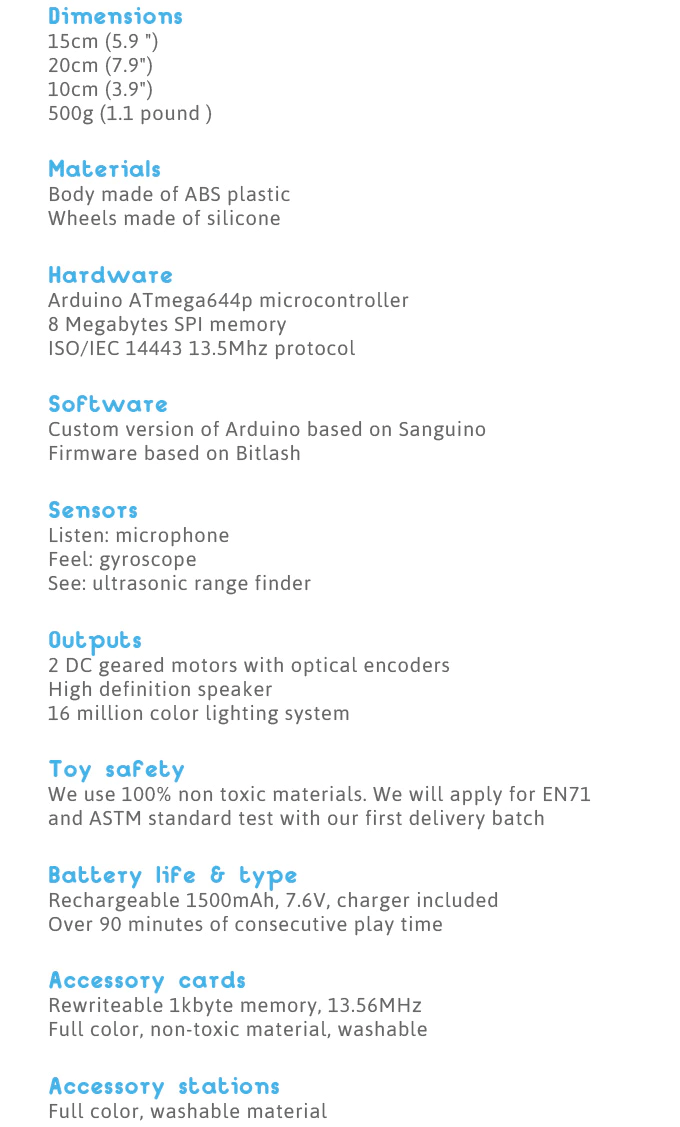
Robelf – Your Moving Monitor Guardian
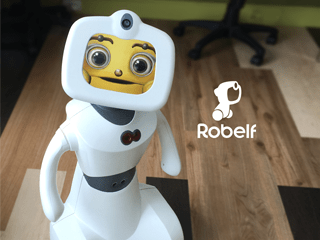
As of last week, Robotelf Technologies Co. has announced their IndieGoGo campaign for their home robot, Robelf. They launched the campaign on October 4th, 2016 in hopes of raising $100,000. The team behind Robelf is hoping to bring recognition to their first project. Although there are currently a few different Home Robots on the market today, Robelf has been designed to stand out with various features not yet seen. Mainly, Robelf flaunts their multi-camera design with detachable back camera (known as their Elf Eye). This gives you an extra IP camera to use. Now with Robelf, you will be getting the only home robot where you do not need to crouch down to utilize it. With an adjustable camera that can move up and down to fit the needs of everyone in the family. With Robelf’s built in iBeacon positioning system, you can setup the patrol time for Robelf to automatically survey your home. The ultrasound and infrared device located on Robelf can accurately dodge any obstacles around and Robelf, with sound detection and a face recognition system; you will be notified of anything out of the ordinary. Many times home owners are nervous when leaving their home alone, especially in certain areas; with Robelf those worries are a thing of the past. The indoor tracking features allow Robelf to roam the house and alert home owners or authorities of any issues. Robelf is the perfect design for non-tech users including both older adults and children.
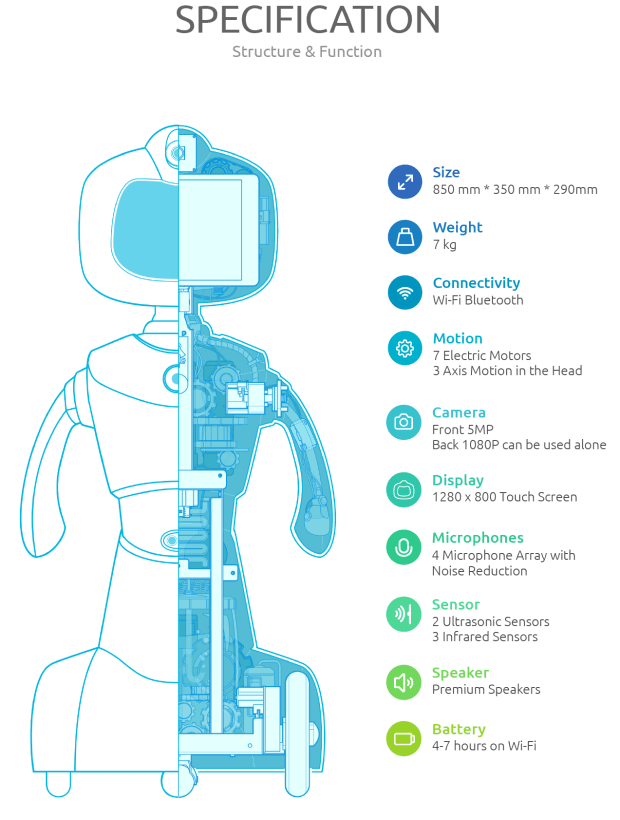
Since 2014, Robelf Inc. has been perfecting their first product and ensuring they release a home robot that is above and beyond anything out today. The size of Robelf was perfected to ensure a home robot that could easily maneuver around the home without an issue, while still being large enough to present a comfortable presence. There is also the ability to adjust the head so children and adults can use Robelf easily. Moving forward, Robelf Inc. is hopeful to reach their goal to be able to mass produce Robelf and bring their amazing home robot to families across the world. Robelf has also made clear they will be shipping by the middle of 2017, and if they do not accomplish this they’ll be offering a full refund to all backers.
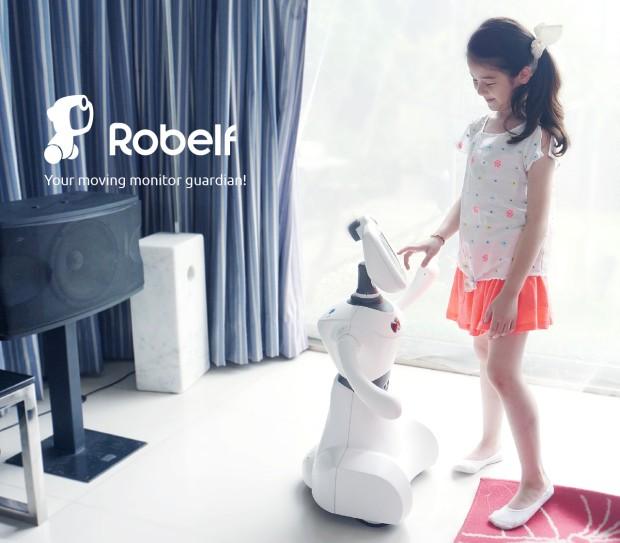
About Robotelf Technologies: After spending 15 years of developing learning software for children, the idea of Robelf came with confidence. Having Robelf in your home will allow learning and education to continue in the home which is one of the most important reasons Robelf was built. The Robelf team, which has a strong background in both OEM and ODM has been able to reduce to the pricing to aro und $400. Their early bird pricing on IndieGoGo will be around $349.
For more information, please check out our website www.myrobelf.com


